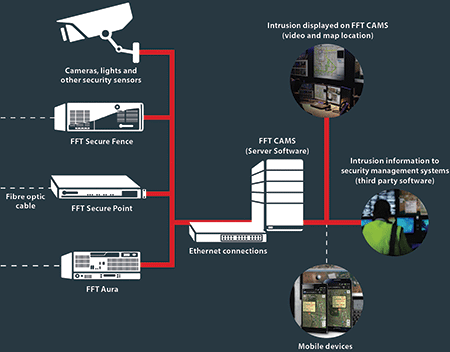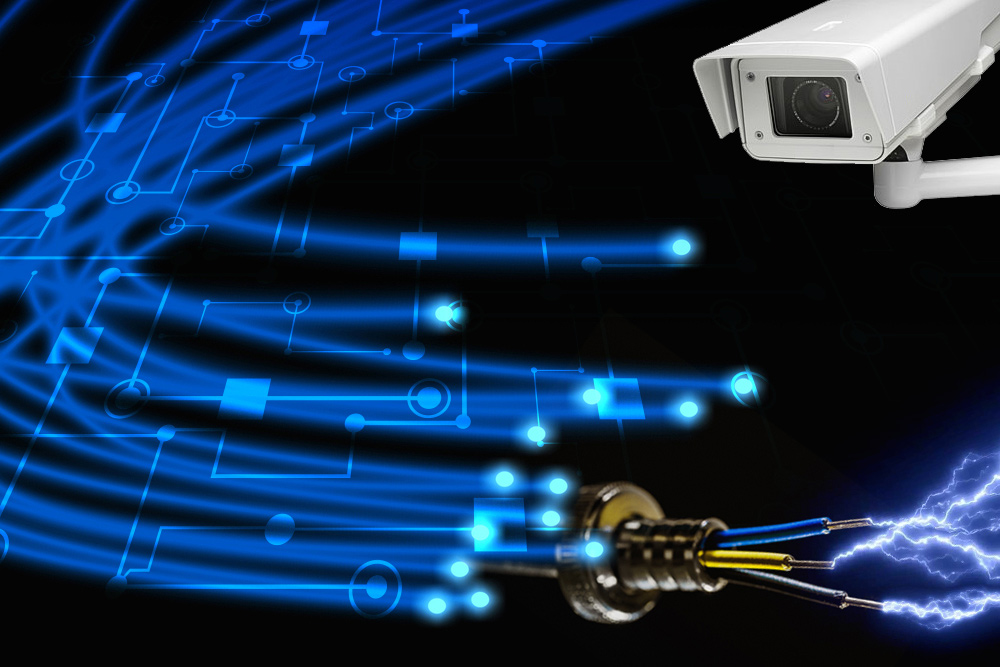How a Fiber Optic Security System Boosts Your Property’s Safety and Surveillance
Wiki Article
The Ultimate Guide to Fiber Optic Safety Systems for Your Business
In an age where safety problems are paramount for companies, recognizing the intricacies of fiber optic innovation can be transformative. This guide outlines exactly how integrating fiber optic safety systems not just improves data defense yet also supplies benefits like resistance to disturbance and real-time monitoring abilities.Recognizing Fiber Optic Technology

The core of a fiber optic cable television consists of a slim glass or plastic center, bordered by a cladding layer that mirrors light back into the core. fiber optic security system. This design ensures minimal loss of signal toughness, even over comprehensive distances. There are 2 key sorts of fiber optic cable televisions: single-mode and multi-mode. Single-mode fibers are designed for long-distance transmission, while multi-mode fibers are appropriate for shorter ranges, usually used within buildings.
Fiber optics are not just much faster yet likewise extra protected than typical circuitry. Their fundamental resistance to electro-magnetic disturbance and the difficulty of tapping into the signal without discovery make them a recommended choice for organizations prioritizing data honesty and safety. As companies progressively count on safe and secure and effective interaction systems, understanding fiber optic modern technology becomes crucial for informed decision-making.
Key Benefits of Fiber Optic Security
When thinking about protection choices for a company, the benefits of fiber optic systems are especially engaging. Most importantly, fiber optic innovation provides extraordinary information transmission speeds and bandwidth ability, making it optimal for managing high-resolution video feeds from monitoring cameras. This capacity ensures that protection workers receive real-time information, boosting overall response times to prospective safety and security dangers.Additionally, fiber optic cable televisions are naturally resistant to electro-magnetic disturbance, which can endanger the stability of traditional copper-based systems. This resistance ensures that the information transferred continues to be safe and secure and nonstop, offering an extra reputable protection framework. In addition, optical fiber are much less vulnerable to physical damage, as they are made from glass as opposed to metal, lowering upkeep costs and downtime.
One more substantial advantage is the raised scalability of fiber optic systems. As service requirements develop, fiber networks can be conveniently expanded to fit added security devices without substantial overhauls to the existing framework. Fiber optic systems use enhanced cybersecurity features, including encryption capacities that secure sensitive data from unapproved access. Collectively, these benefits make fiber optic safety systems a robust option for services looking for to boost their safety measures.
Installment Process and Considerations
Taking into consideration the complexities involved, the installation process of fiber optic safety systems requires mindful planning and implementation. The first action entails a thorough site evaluation to determine optimum areas for cabling and equipment. This evaluation needs to consider ecological aspects, existing facilities, and possible susceptabilities.
In addition, the installation has to More Info follow neighborhood building regulations and market requirements. This may include collaborating with numerous stakeholders such as structure managers, IT teams, and safety workers to ensure seamless assimilation with existing systems.
Post-installation, rigorous screening is essential to confirm system performance and determine any kind of problems that might arise. By focusing on these factors to consider throughout the installation procedure, businesses can make sure a durable and reliable fiber optic protection system that satisfies their details security needs.
Most Recent Technologies in Fiber Optic Safety
Recent developments in fiber optic innovation have significantly improved the capabilities of security systems for organizations. Among one of the most notable developments is the assimilation of fiber optic sensing units that can identify resonances and invasions along the boundary of a facility. These sensors give real-time monitoring, making it possible for fast reaction to potential violations.Furthermore, the growth of distributed fiber optic noticing modern technology permits for the constant surveillance of large areas with a solitary fiber cable television. This technique not only reduces installation prices however additionally improves the reliability of monitoring systems by eliminating the demand for several, separate sensing units.
Additionally, improvements in multiplexing methods have actually allowed organizations to transmit large quantities of information over fiber optic networks, boosting the capacities of video surveillance systems. High-definition video feeds can now be sent over cross countries without loss of high quality, ensuring that security personnel have access to clear and workable details.
Finally, using fabricated knowledge (AI) along with fiber optic systems is changing danger discovery. AI algorithms can assess information from fiber optic networks to determine uncommon patterns or actions, enabling for proactive protection measures. These technologies collectively stand for a considerable jump onward in fiber optic safety and security innovation.
Choosing the Right System for Your Organization
Choosing the appropriate fiber optic protection system for your service is essential for making sure optimum defense and assurance. To make an informed option, analyze your certain safety and security requirements, thinking about elements such as the dimension of your properties, the nature of your operations, and potential vulnerabilities.Begin by examining the degree of security required; for circumstances, high-risk atmospheres may demand innovative systems with integrated security and invasion detection capabilities. Next, consider scalability; as your this content service expands, your safety and security system need to can expanding to fit boosted demands her explanation without significant overhauls.
In addition, explore the reliability and efficiency of various systems. Search for suppliers with established online reputations and customer endorsements that testify to their service quality. It's likewise advisable to make inquiries about the modern technology's compatibility with existing infrastructure, ensuring a smooth combination procedure.
Conclusion
Finally, fiber optic safety systems provide a durable option for boosting service safety and security frameworks. The integration of high-speed information transmission, resistance to electro-magnetic interference, and progressed tracking capacities significantly enhances total protection (fiber optic security system). By understanding the modern technology, identifying its advantages, and considering the setup procedure, organizations can make educated choices. The current advancements additionally boost the efficiency of these systems, guaranteeing that services stay safe and versatile in an ever-evolving risk landscape.Report this wiki page